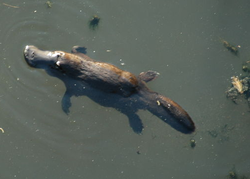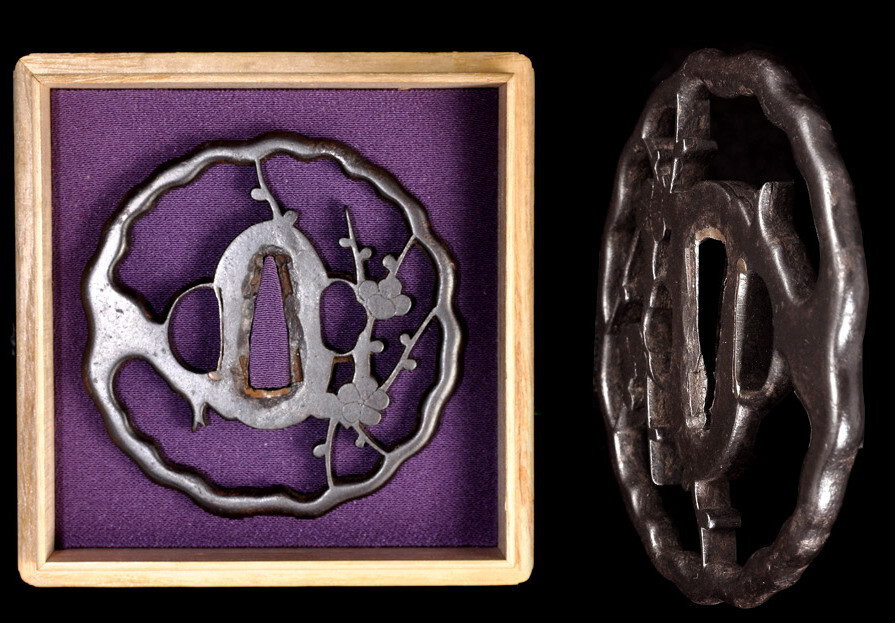-
Posts
426 -
Joined
-
Last visited
Everything posted by Lorenzo
-
John, here we are discussing about a Japanese sword koshirae and not European guns, armour, cups and plates
-
Have you ever seen old and traditional fittings in which the only decoration is obtained by acid etching here and there :?
-
I would say showa.
-
Steven, you may be well right there. I blame myself for not having saved enough yet to buy the Ito san's encyclopaedia... until then I feel like I am just inventing things, which is not helping. Me too. But I must admit the article I linked is the only place where I see mention of the link between some Akasaka master and Higo. L
-
I was waiting for others to get in as I don't like to copy and paste other opinions, but before the topic gets lost in time here is what a friend of mine sent me via email: http://www.shibuiswords.com/higokinaiechizen.htm Quote from the above link, regarding Akasaka: Now, Nishigaki Kanshiro (1613-1693) was student of Hirata Hikozo, but his style and influence was more from Hayashi Matashichi, as well as Kanshiro nidai (1639-1717). I do feel that the above posted tsuba desing comes from Nishigaki shodai and was later perfected by the nidai. Shodai: Nidai: To have a confirmation, would be enough to understand if there are earlier example of the above design from other masters. Regards, Lorenzo
-

Acquiring a Tanegashima (Japanese matchlock)
Lorenzo replied to estcrh's topic in Tanegashima / Teppo / Hinawajū
There seems to be red active rust on both the barrel and the stock. Would be nice to try some countermeasures and try cleaning the stock Then you can place your barrel in a shira-stock -
-
I should amend my original post. I was concentrating only on one kind of design so my question was rather general and meaningless. Let's reformulate . Akasaka school origin should be from owari, ok. Akasaka shows a wide range of designs, often easy to identify, except the one I posted on my first post. At a certain point of the history, Akasaka diverged from it's "standards" and started making this kind of tsuba with waved mimi transforming into pine tree or ume branch, among other usual Akasaka designs. While it's true that this style can be found on both Higo and Akasaka pieces, in my experience statistically speaking when you look at this style you are most likely watching an Higo piece. This style is very peculiar, a bit like Umetada flush inlay; The use of the framing is brilliant, and the drawing has thousand variations but the idea is always the same. I would like to understand if the father of the style is more likely identifiable in Higo or in Akasaka, it would be a pleasure to be able to identify this style with the name of the artist who gave birth to it. Lorenzo PS: as usual, sorry for my EngRish
-
You don't need to change your name, just to add a signature ad the end of your post. Welcome to the forum, Lorenzo
-
Here you can see an image of the shirasaya with "stripes (..)" I mentioned before: http://www.nihonto.ca/yukimitsu-4/
-
..and just as a side note; usually nihonto are displayed with the handle on the other side.
-
If you want something a little different from what I see from your pic, and if your chosen artisan can do it, here is an idea: This has water buffalo horn inserts, fuchi and koiguchi and mekugi. There is another beautiful variation of the plain shirasaya; it has some "stripes" of different colour at wide distance between each other. If I can find a picture I will post it; it is not common, and usually find in precious/expensive blades only.
-
Thank you Ford, it makes sense. This is what Aoi Art has to say regarding the relation; I think we may get the chance to investigate further and clear this up? :?
-
Hello. I wonder what relation there is between some Higo schools and some Akasaka work. Hayashi tsuba: Nishigaki: Akasaka Tadayoshi: In this particular case we have akasaka tagane mei, and 3 layers construction. Apart for that, I think the style is very similar; why? When does this schools (if ever) got in touch? Is it true that Akasaka may be born from a higo master? Apologize if it has already been discussed before.
-
I think that "Sayashi" website is a pearl. http://www.sayashi.com/ I don't know him, perhaps many of you knows.. In this particular page, he says: I don't know how the style can quickly identify the maker, but he seems very informed 'cause some of the stuff he makes are almost never seen in other sources (like the doubled shirasaya). I wonder if he could help the discussion out adding some information about the styles.
-
Forgot to add the result of the attribution;
-
If you open the big picture with the full blade, look at the left image (omote) where the edge almost touch the border of the picture, let's say half of the total length of the sword nakago included. Visible in ura as well, but shorter. You can see it also in the "details" picture, on the first detail from the top, right in the middle of the picture. It's shorter there so I guess that detail is taken from the ura side of the blade. The seller is honest in pointing it out.
-
Is stated on the description, and you can see it both ura and omote in the full sword picture.
-
It is unlikely to me. You are welcome. Sorry for having detailed before, my fault Regards
-
By the picture of the tsuka with a BIC lighter close by, I guess the blade is very tiny.. can you post some sizes? I have had a sword similar in size and shape to yours (as far as I can guess from your pictures) and I was doubting back then that it could have been a boy's day sword.
-
The crack is one factor, but the very evident proof is the sekigane that instead of being a copper piece is integral with the tsuba body. Look here, at yours: And then look at this (stolen on internet..)
-

This Week's Edo Period Corner
Lorenzo replied to Bugyotsuji's topic in General Nihonto Related Discussion
...and you should provide some room in your boxes for a crowbar, your shirasaya are so tight! :lol: -

This Week's Edo Period Corner
Lorenzo replied to Bugyotsuji's topic in General Nihonto Related Discussion
Better in person Those pictures doesn't give justice to it. It's a cute blade, very tidy. I love the lacquer work on the nurizaya as well, very precise. -

This Week's Edo Period Corner
Lorenzo replied to Bugyotsuji's topic in General Nihonto Related Discussion
Told you my box is cute :D










